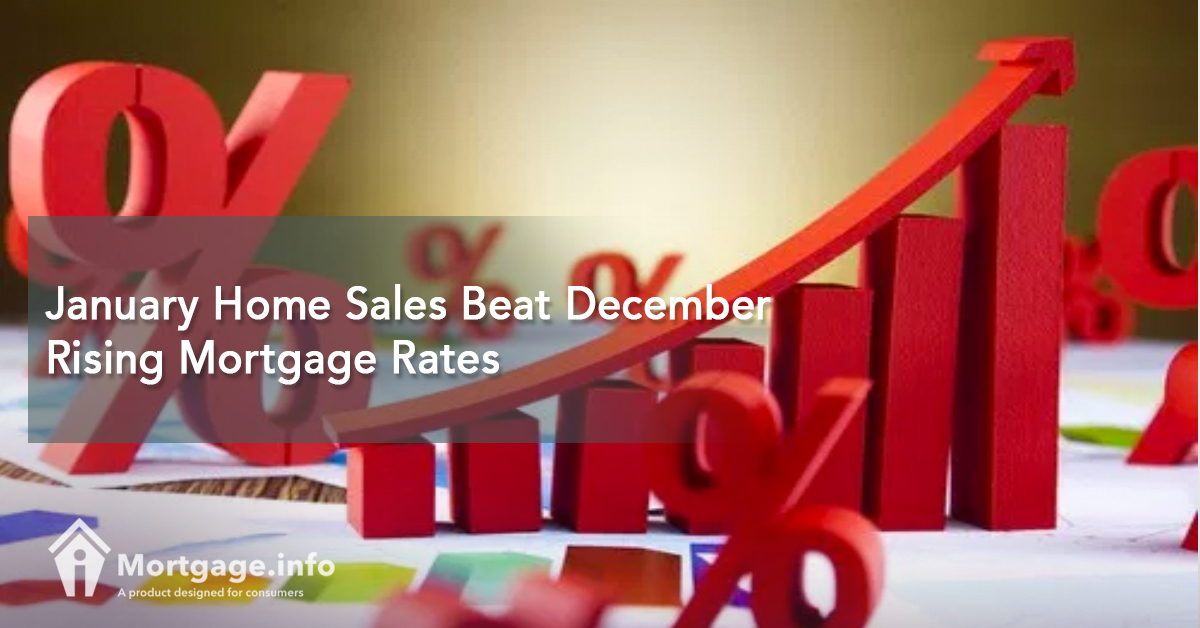Existing home sales rose in January, up to 3.3% from December, according to the National Association of Realtors. The January home sales, the NAR data revealed, also beat the record set a decade ago in February 2007.
As the press statement noted, the rising mortgage rates did not deter consumers from buying homes amidst higher median prices and lower supply of homes compared to a year ago.
Existing Home Sales in January
Sales of existing homes jumped 3.3% in January to a seasonally adjusted rate of 5.69 million compared with the revised existing home sales in December 2016 of 5.51 million.
The pace of January’s existing home sales was 3.8% higher than it was in January 2016’s 5.48 million and November 2016’s 5.60 million. The January 2017 record is the strongest so far since February 2007’s 5.79 million, the NAR noted.
Key findings in the January existing home sales are as follows
- The number of single-family home sales expanded 2.6% to a seasonally adjusted annual rate of 5.04 million, up from 4.91 million in December and 3.7% higher than in January 2016’s 4.86 million. A single-family home, on an average, had a median price of $230,400, which was 7.3% higher than January 2016.
- The number of condo and co-op sold in January rose 8.3% to a seasonally adjusted annual rate of 650,000 units, and was 4.9% higher than January 2016. The median condo price was $217,400, a 6.2% increase compared to a year ago.
- In the Northeast, sold existing homes rose 5.3% to an annual rate of 800,000 units and represented 6.7% increase year-over-year. A home in the Northeast was sold at a median price of $253,800, 2.5% higher than last year.
- Sold existing homes in the Midwest slowed down to 1.5% to an annual rate of 1.29 million and were 0.8% below the January 2016 level. A home in the Midwest had a median price of $174,900, which is 6.5% higher than last year.
- In the South, existing home sales grew 3.6% to an annual rate of 2.31 million units in January and were 3.1% higher than last year. A home in the South was priced $201,400, which increased 9.2% from last year.
- In the West, existing homes recorded 6.6% to an annual rate of 1.29 million units in January and represented an 8.4% year-over-year increase. The median price for a home in the West was $332,300, a 6.8% increase from January 2016.
In January, all-cash sales constituted 23% of the total transactions compared with 21% in December and 26% in January 2016. The number of individual investors who purchased homes in January remained unchanged from December at 15%, a drop from a year ago’s 17%. More than half of the investors (59%) paid in cash in January.
Sales of distressed properties, i.e. foreclosure and short sales, made up 7% of the total January home sales. The percentage share remained the same in December but was down from a year ago’s 9%. In January, a foreclosed home sold at a discounted price of 14% below the market value, on an average, while short sales fetched 10% discounts.
The average commitment rate for a 30-year fixed-rate conventional mortgage was 4.15% in January, down from 4.20% in December per Freddie Mac. The commitment rate on 2016 overall was 3.65%.
“Much of the country saw robust sales activity last month as strong hiring and improved consumer confidence at the end of last year appear to have sparked considerable interest in buying a home,” Lawrence Yun, chief economist at NAR, said in the accompanying statement.
“Market challenges remain, but the housing market is off to a prosperous start as homebuyers staved off inventory levels that are far from adequate and deteriorating affordability conditions.”
Existing Home Median Price, Inventory in January
Existing homes in January 2017 had a median price of $228,900, which showed an increase of 7.1% from $213,700 in January 2016. This was also the fastest in price increase recorded since a year ago and marked year-over-year gains in the past 59 consecutive months.
By the end of January, total housing inventory was 1.69 million, representing a 2.4% increase. But this is 7.1% lower compared to a year ago’s inventory of 1.82 million and is the 20th straight month that the inventory fell year-over-year. The number of unsold existing homes remains unchanged since December 2016, at 3.6-month supply given the current pace of home sales.
In January, homes remained on the market for 50 days, compared to 52 days in December and 64 days a year ago. Short sale properties remained the longest on the market with 108 days, followed by foreclosured homes with 51 days and non-distressed homes with 49 days.
In January, 38% of homes remained less than a month before being sold. And with the spring homebuying season on its way, this trend will continue.
Mr. Yun commented, “Competition is likely to heat up even more heading into the spring for house hunters looking for homes in the lower- and mid-market price range.” According to him, citing NAR and realtor.com®’s ongoing research, “the combination of higher rates and prices led to households in over half of all states last month being able to afford less of all active inventory on the market based on their income.”
NAR President William Brown added, “Supply and demand imbalances continue to be burdensome in many markets and now Fannie Mae is supporting a Wall Street firm’s investment in single-family rentals. This will only further hamper tight supply and put major investors in direct competition with traditional buyers. Instead, the GSEs should lower overly burdensome fees and help qualified borrowers become homeowners.”

